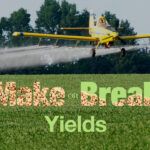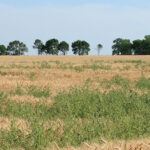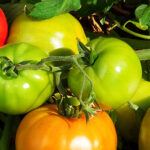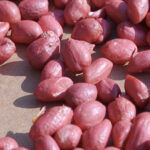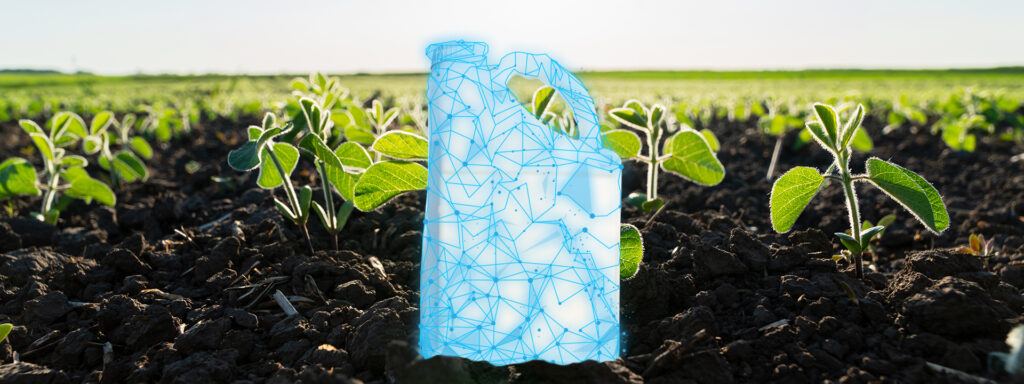Trending 2050: The Future of Farming
Based on current developments, experts predict dramatic changes in agriculture by 2050.

By the year 2050, U.S. growers will need to reach an impressive level of food production to help feed a growing world population. Fewer in number, they will operate multifaceted businesses with stunning new technology to increase efficiency on farms.
These predictions come from experts who study food and farming trends. Here’s a look at what they think life on the farm will look like in 33 years.
Food Demand Increases
The two big drivers of food demand—population and income—are on the rise. The world’s population is expected to reach 9.1 billion people in 2050, up from 7.4 billion in 2016. Farmers globally must increase food production 70 percent compared to 2007 levels to meet the needs of the larger population, according to a report from the Food and Agriculture Organization of the United Nations.1
Also driving food demand is an increase in global income levels, especially those in developing countries. As a result, these countries will be able to expand diets with more protein.
A different trend is emerging in highly developed countries with more health-conscious populations. The focus on starch-based crops like corn will shift to more plant-based proteins like soybeans and other legumes, says Derek Norman, head of Corporate Venture Capital at Syngenta Ventures, which helps support other companies that share its vision of producing more crops with fewer resources.
Consolidation Accelerates
The 2012 ag census revealed a big shift in farmer ages that holds major implications for the future, says Widmar. For the first time, growers who are older than 65 outnumber farmers who are younger than 45. The difference is substantial, with 2.1 older growers for every farmer younger than 45.2
As incomes rise, consumer preference moves from wheat and grains to legumes, and then to meat, including chicken, pork and beef.
When older growers exit the business, there are fewer younger growers to replace them. As a result, farm consolidation will be significant and quick, says Widmar. The consolidation will change farm dynamics to larger, more managerial complexities.
Farming will go “from a one-man show to something resembling a medium- to large-size business,” he says. “As a farmer, it will be very complicated, with a mix of multigenerational family members and hired employees.”
High-Tech Solutions Evolve
Farm consolidation will drive the need for more outside labor. Expect high-tech solutions like robotics to come to the rescue.
“If you have a robot, it can help manage labor issues,” Widmar says. Already, dairy farmers use robotic milkers as a substitute for labor. And farm equipment manufacturers are testing prototypes of robotic tractors and sprayers to handle fieldwork without human drivers.
The leap from prototype to commercial operation of robotic machinery may be short. Many new machines are currently equipped with the electronics to control operations with very little human interaction. However, the legal and regulatory issues surrounding robots must be bridged first.
With its regulations already in place, drone technology is poised for a boom in farm usage. In the next 10 years, the agricultural drone industry will generate 100,000 jobs in the U.S. and $82 billion in economic activity, according to a Bank of America Merrill Lynch Global Research report. Potential use of on-farm drones by 2050 is huge, from imagery and product application to transporting supplies and jobs not yet imagined.
As farming relies more on complex equipment with lots of electronics, data collection will play an increasingly larger role in farm management. Programs like AgriEdge Excelsior® from Syngenta help growers learn to use data for whole-farm management. In the future, farms will have an increased need for data and information technology specialists, Widmar says.
Gene Editing Booms
“By 2050, there will be gene-edited crops, and it will trigger a much wider variety of crops being grown,” says Norman.
This new technology allows scientists to precisely edit genes in DNA with the goal of creating a better crop variety. In the future, gene editing should enable farmers to select specific crop varieties that have features like resistance to different diseases, drought tolerance or more desirable oil content. Gene editing will provide a greater variety of crops that can be grown by editing out traits hampering widespread production.
By-the-Plant Crop Management
Water availability, environmental impacts and soil health will continue to challenge growers in the future. But new technologies will help them deal with these issues more efficiently, says Norman.
For example, the Israeli company Phytech, which is collaborating with Syngenta, has developed a monitoring system that features continuous plant-growth sensors, soil-moisture sensors and a microclimate unit. Monitoring data is then accessible on mobile devices and computers for immediate action, if needed.
“The technology to measure soil health, as well as satellite and aerial imagery to monitor crop growth, will be mainstream,” Norman says. He also expects widespread adoption of precision technology that reaches down to the plant level. Blue River Technology, another Syngenta collaborator, has developed a precision-smart implement that does just that. Called a LettuceBot, the implement uses cameras, processors, computers and quarter-inch sprayers to thin lettuce plants in the fields. This type of technology results in less chemical use and a lower environmental impact, which will be very important in 2050.
A Clue to the Future
While predictions can shed light on the future, we are still 33 years away from 2050. A whole new generation of growers, who are not yet born, will be farming midcentury, and much will happen between now and then that we cannot predict.
But if the past is a clue to the future, U.S. growers will continue to seek better ways to produce crops by embracing innovation.
1 “Global Agriculture Towards 2050”
2 “Farm Demographics—U.S. Farmers by Gender, Age, Race, Ethnicity, and More”













